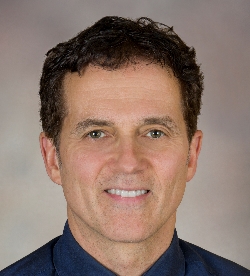3 min read
Dr. Brown Answers a Claims Adjuster's Questions:
Question:
Please explain the specialty of Pain Management and what conditions are typically treated by a Pain Management specialist?
Answer:

Robert Brown, M.D.
Pain Management
Pain Medicine is a medical subspecialty, largely consisting of board-certified anesthesiologists who have accumulated academic education, expertise and training in spinal column injections and peripheral nerve blocks for surgical anesthesia. Post-graduate training in Pain Medicine includes therapeutic injections for spinal nerves (herniated discs), arthritic joints in the spinal column, and diagnostic and therapeutic peripheral injections for nerve pain in the extremities, all in order to restore function and mobility.
Injections are generally preceded by non-invasive modalities such as therapeutic medications and physical therapy in order to correct underlying biomechanical dysfunction and improve activities of daily living. Sleep disturbances and mental health counseling are also areas that can be addressed by a board-certified Pain Medicine specialist, if needed.
Question:
What are the differences between a transforaminal epidural steroid injection (TFESI), a medial branch block, and a radiofrequency ablation procedure? What conditions do these procedures treat?
Answer:
Transforaminal epidural steroid injections (TFESI)
Transforaminal epidural steroid injections are therapeutic procedures utilized to alleviate nerve pain from a herniated disc or spinal stenosis. Patients who suffer from these conditions typically complain of burning or shooting pain in the arms or the legs. The injections will reduce inflammation and pressure around the nerve .
Medial branch blocks
Medial branch blocks of the facet joints in the spinal column are administered strictly as diagnostic procedures to determine if the patient's pain originates from the respective facet joints in the spinal column. The duration of pain relief is typically only for a few hours, until the local anesthetic medication wears off. If the patient successfully undergoes 2 separate injections at the same area that positively confirm the pain source emanates from the respective joints, the patient would then qualify for radiofrequency ablations of the medial branch nerves of the facet joint.
Radiofrequency ablations
Radiofrequency ablations melt the fat that wraps around the medial branch nerves to halt the transmission of pain from the nerves. The fat will grow back after 6-24 months and if the patient has sustained greater than 50% reduction in pain for that period of time, a 2nd radiofrequency ablation would be indicated and can be repeated.
Question:
What is the criteria for spinal cord stimulation, and from your experience, what is the success rate?
Answer:
The principle criteria for spinal cord stimulation (SCS) is chronic leg and back pain that persists at least 6 months after a patient has undergone a lumbar or cervical spine surgery (post laminectomy or failed back syndrome). Newer technology has demonstrated much better relief of back pain with SCS than in the past. Generally, if the patient has exhausted all other conservative therapy and has passed psychological clearance, SCS treats leg pain from post laminectomy syndrome very well. With the correct patient selection criteria, SCS has a high success rate in patients that have exhibited significant pain relief with the SCS trial.
Dr. Robert Brown is board-certified in interventional pain management and anesthesia, and has more than 30 years of experience in the medical field. He graduated from the University of Wisconsin and specializes in nerve injury for the neck and back (pre/post surgery and long-term management).
Want to ask one of our physicians a question? Now is your chance! If you are a legal or claims professional, you can ask a claims-related question informally by clicking here.
A Previous "Ask the Doctor" Response
In our previous "Ask the Doctor" blog, Dr. Enoki shares expert insights on hand injuries, including TFCC tears, carpal tunnel syndrome, de Quervain's and more.